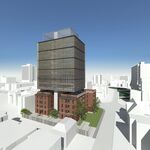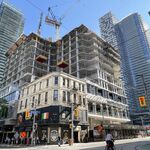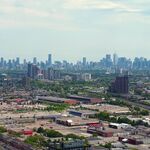JasonParis
Moderator
simply Dan and I recently took a trip to beautiful and romantic Detroit. Haha! Seriously though, Detroit is a fascinating place on so many levels and perhaps the greatest example of "how did people let this happen" that we have in North America. While it's sometimes hard to say anything nice about Detroit, you have to admit that it's pretty photogenic. I also must admit to finding the downtown in slightly better shape than when I was last in Detroit (2003), despite the dark abyss that is the Michigan economy. Enjoy and please comment!
Detroit begins to rise out of farmer's fields about 10 minutes before arriving in Windsor.
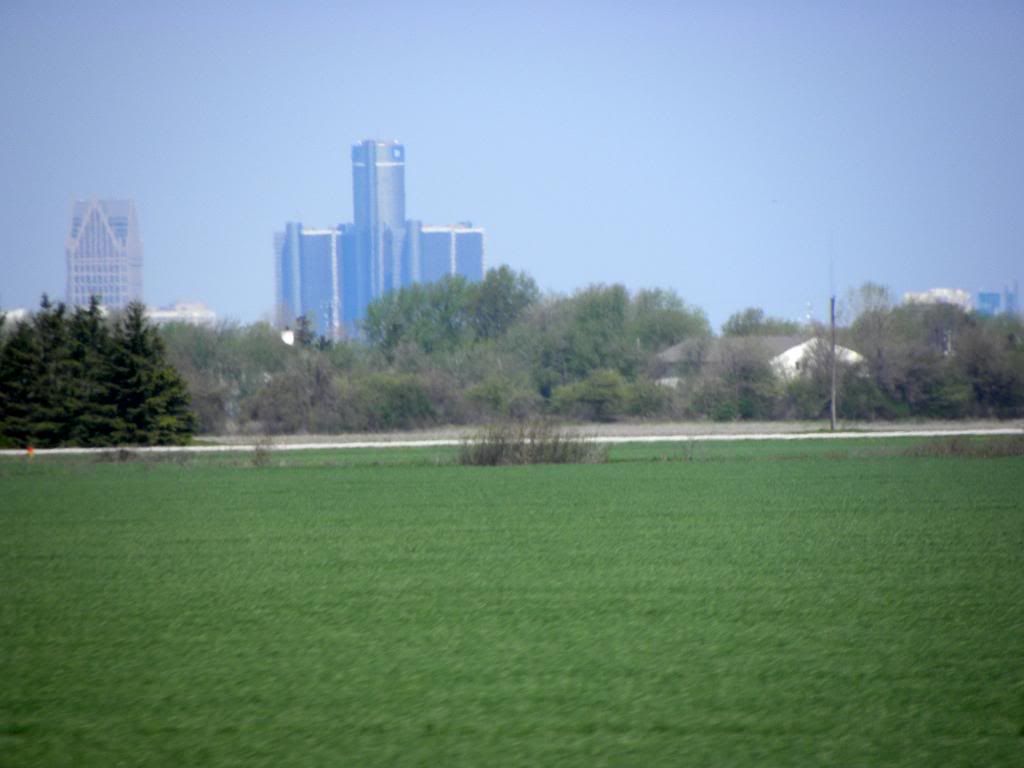
Entering North America's "car capitals" in a Benz.
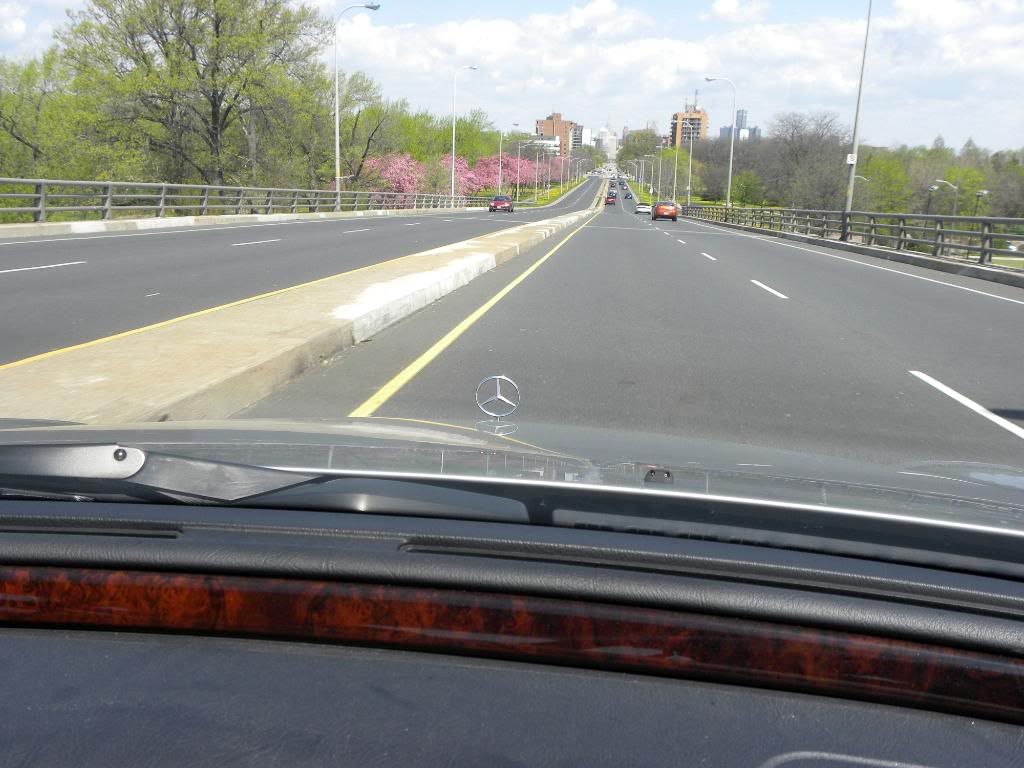
Detroit's skyline towers over Windsor's Ouellette Avenue as if no river or international border exists.
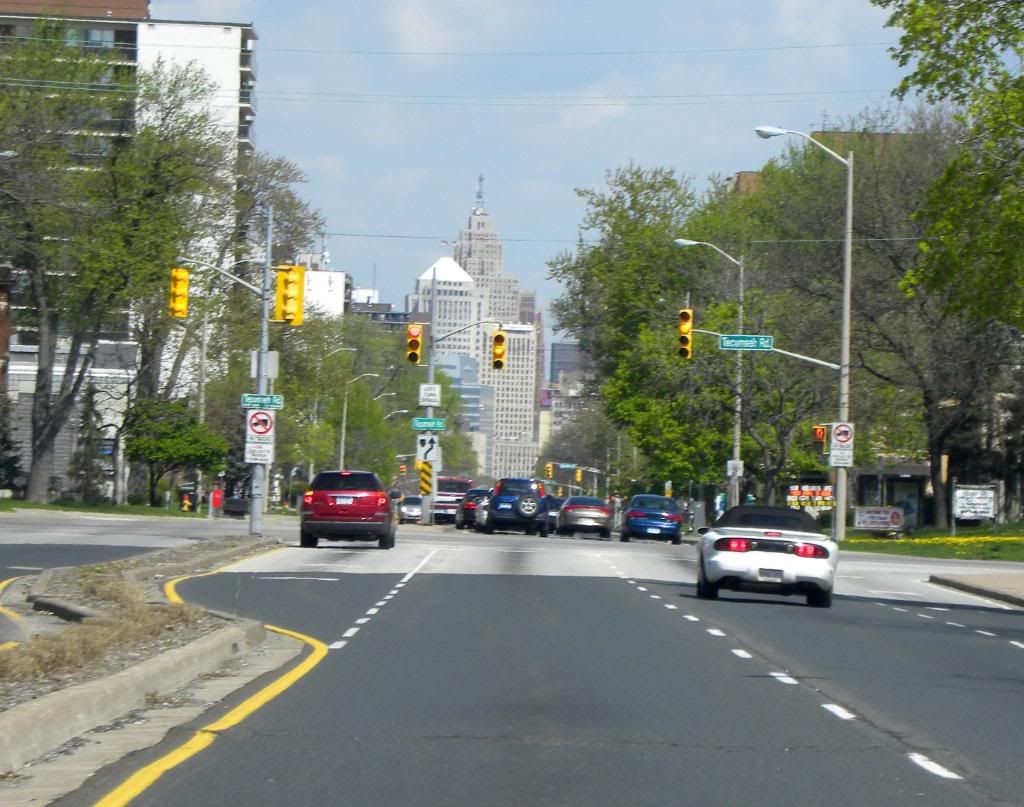
Detroit's skyline from Windsor's Riverside Drive
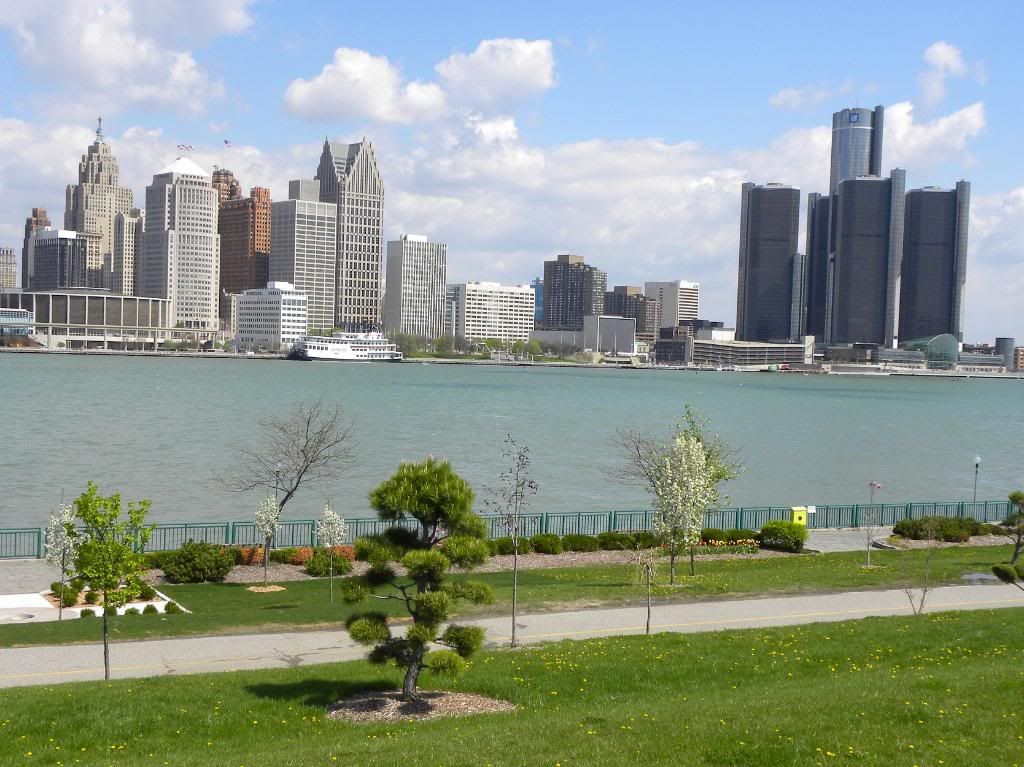
A final shot of Detroit from the Canadian side of the Detroit River.
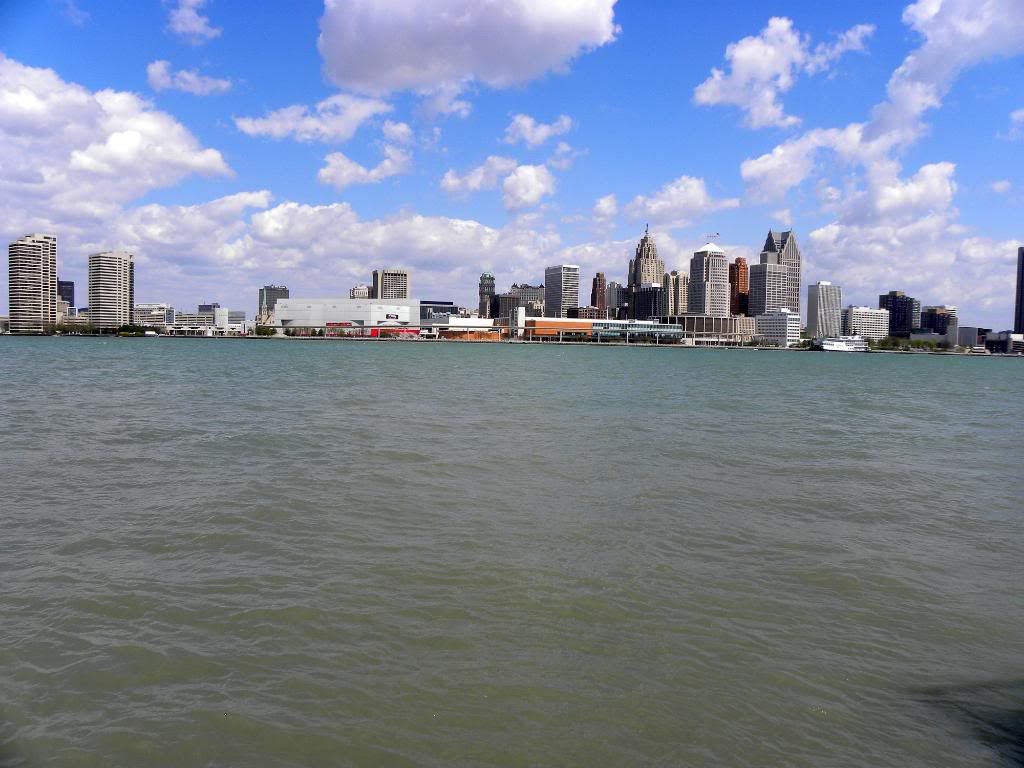
Upon entering Detroit we headed straight up Woodward to the "Arts Center" neighbourhood and to the Detroit Institute of the Arts.
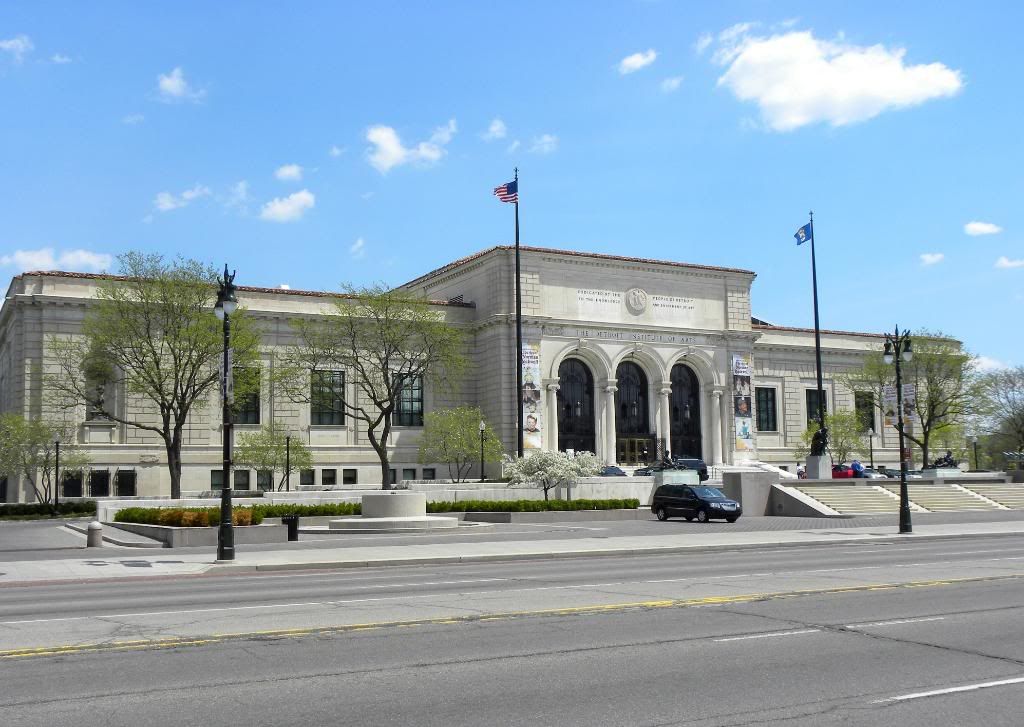
The Detroit Institute of Arts (DIA) showcases an immense range of art, much of it acquired during the period when Detroit was a much larger, powerful and more significant city. The DIA actually ranks as the second largest municipally-owned museum in the United States with an art collection valued at more than $1 billion dollars.
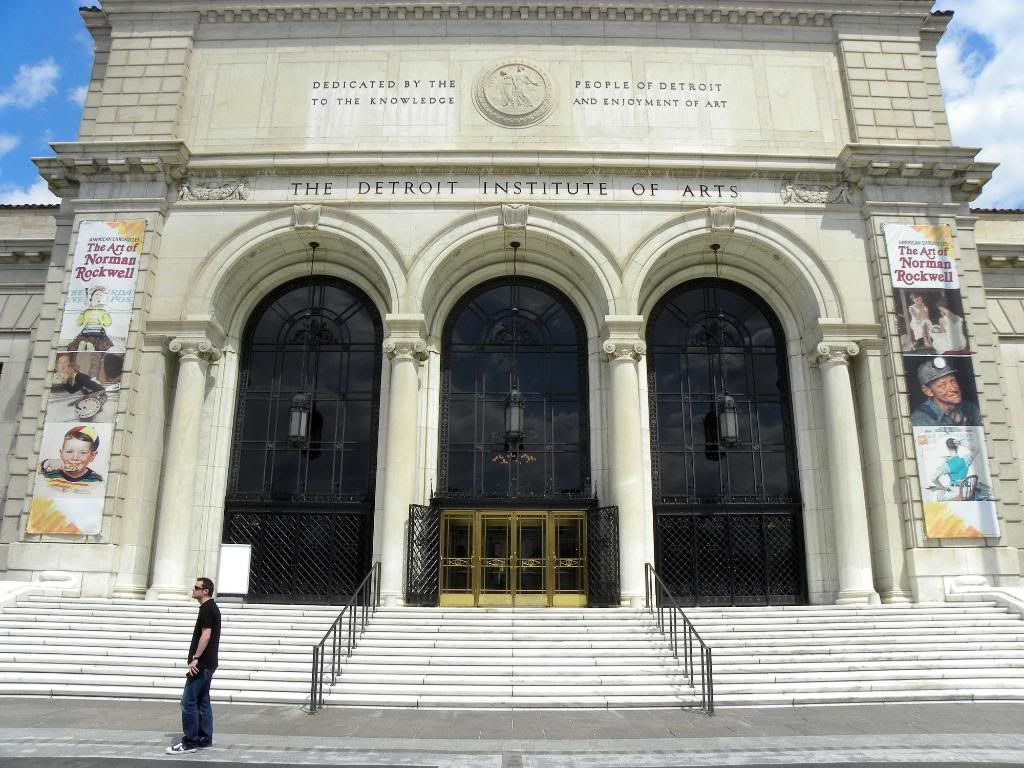
Our primary purpose in visiting the DIA was to see Diego Rivera's (Mexican, 1886–1957) fresco cycle in Rivera Court.
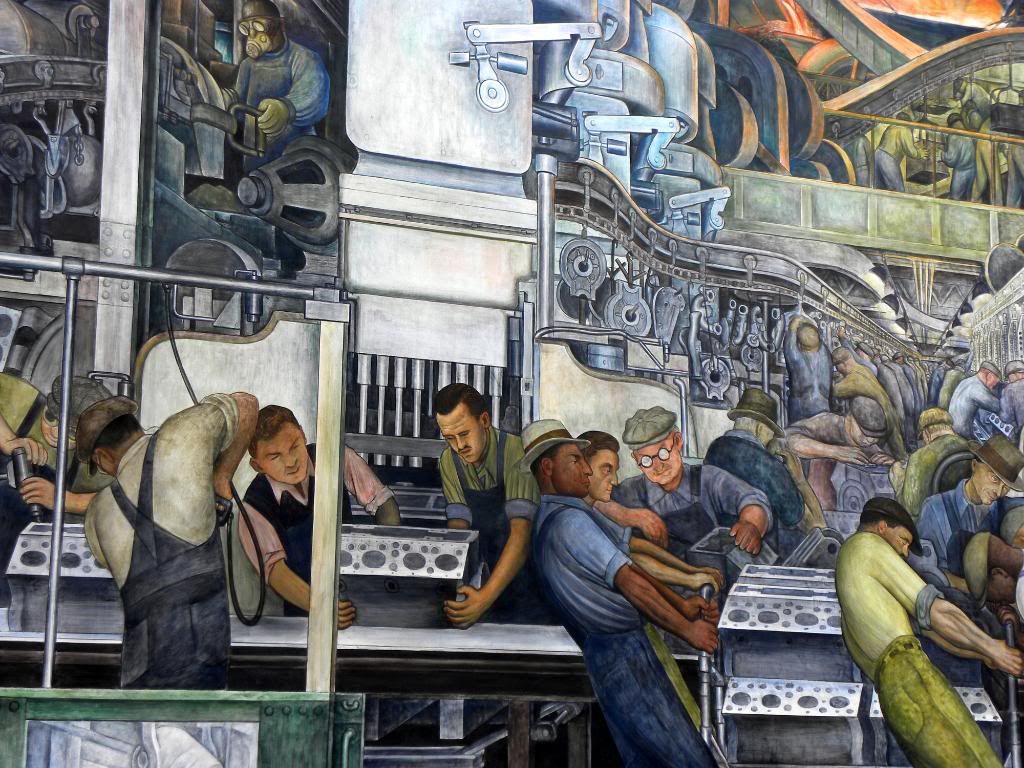
The central panel of the north wall depicts the production of the 1932 Ford V8.

The major panel of the south wall is devoted to the production of the automobile’s exterior.
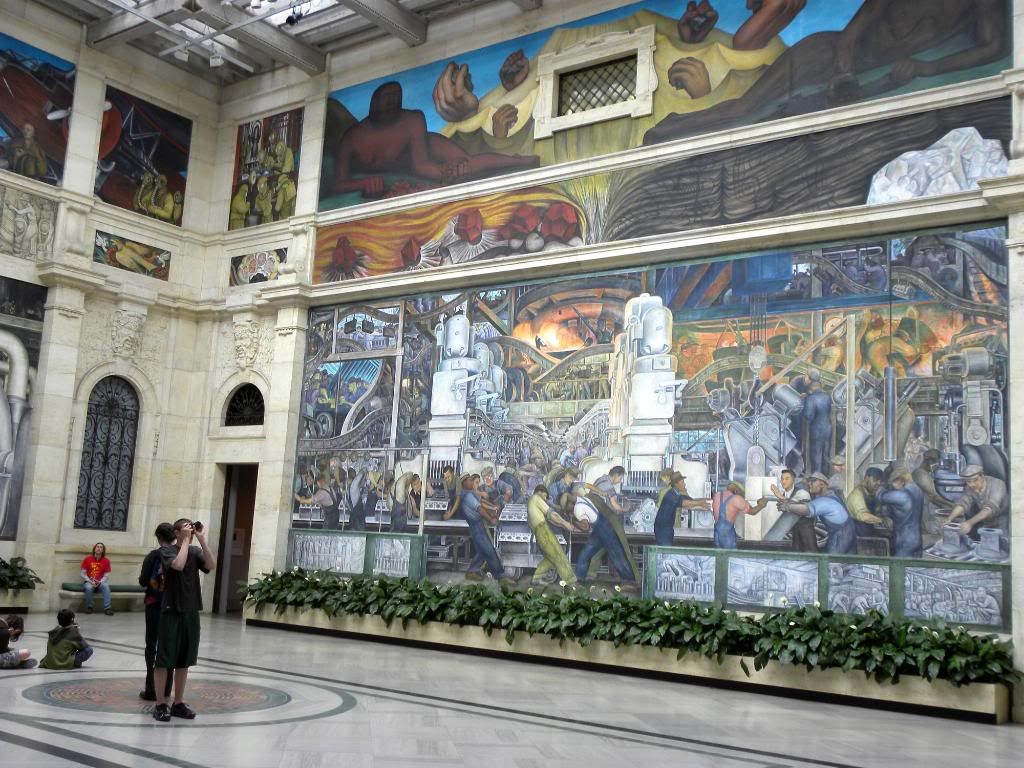
The north and south walls are both devoted to three sets of images: the representation of the races that shape North American culture, the automobile industry and the other industries of Detroit. At the bottom of the walls are small panels which depict the sequence of a day in the life of the workers at the Ford River Rouge plant.
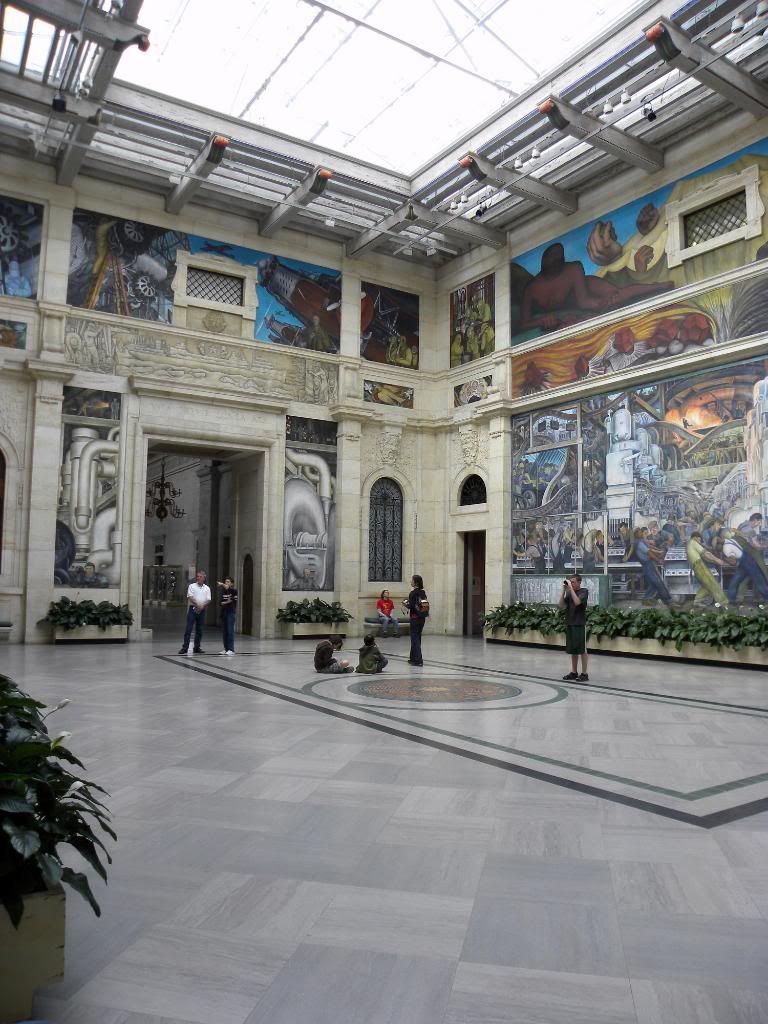
The frescos were commissioned by Edsel Ford, president of the Arts Commission as well as of Ford Motor Company and Dr. William Valentiner, director of the DIA.
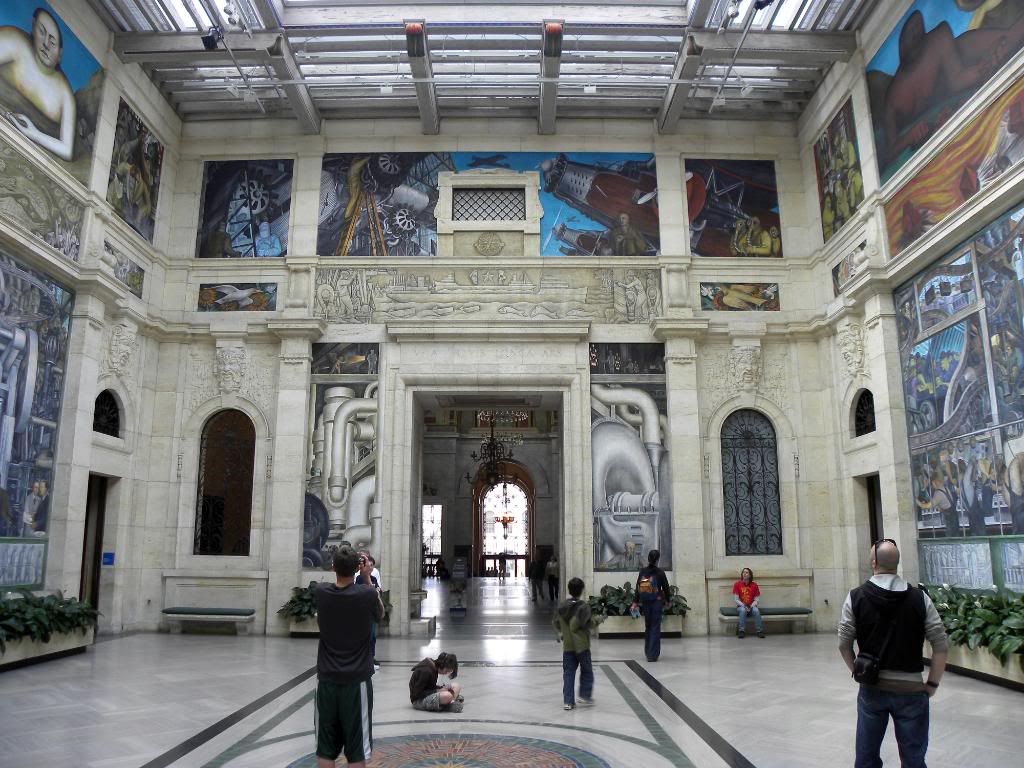
Rivera Court is considered one of the finest examples of Mexican muralist work in the United States and Rivera considered it the most successful work of his career.
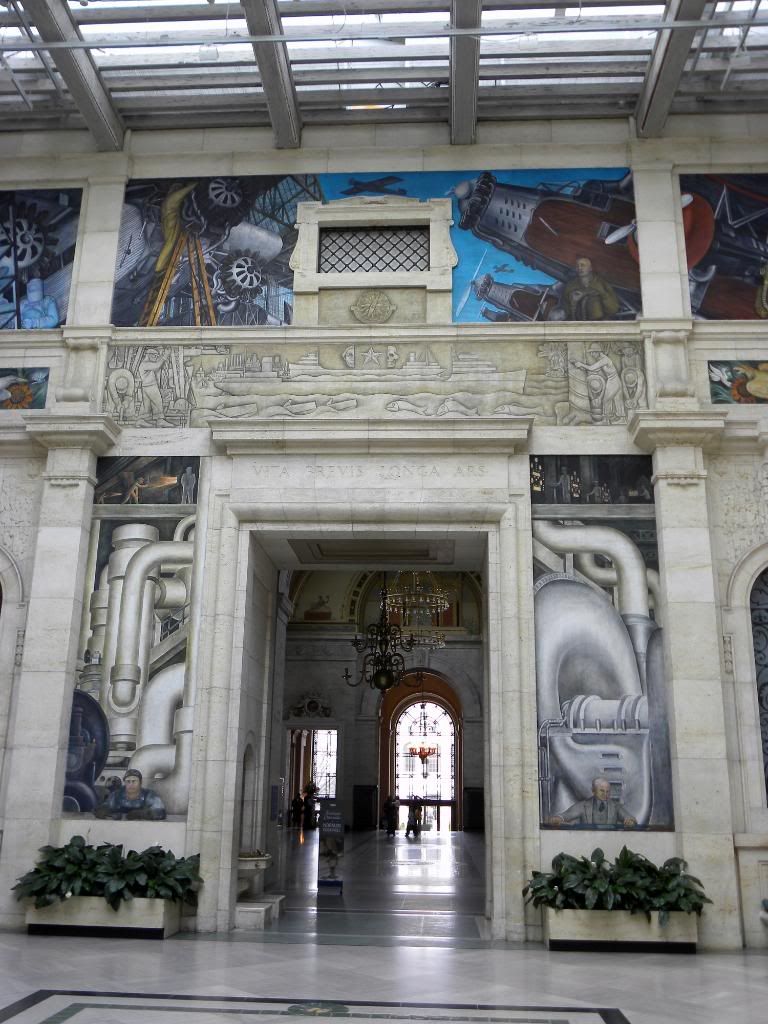
The DIA's Rivera Court (cont.)...

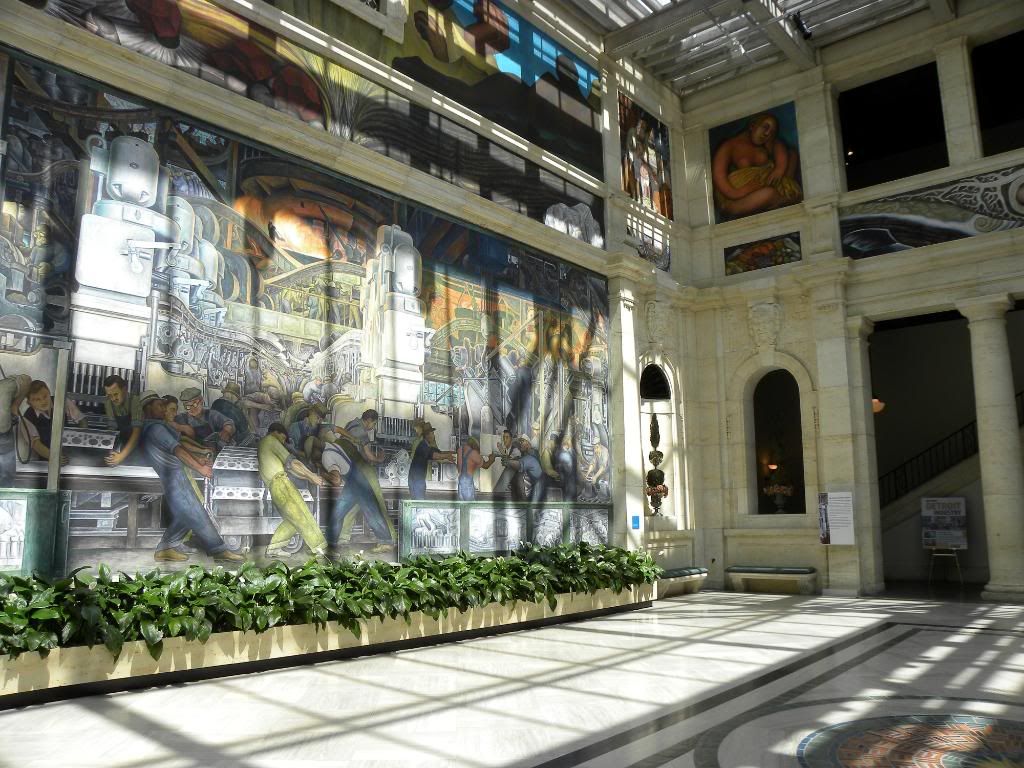
Henry Ford himself is depicted in one of the murals (in the DIA's Rivera Court).
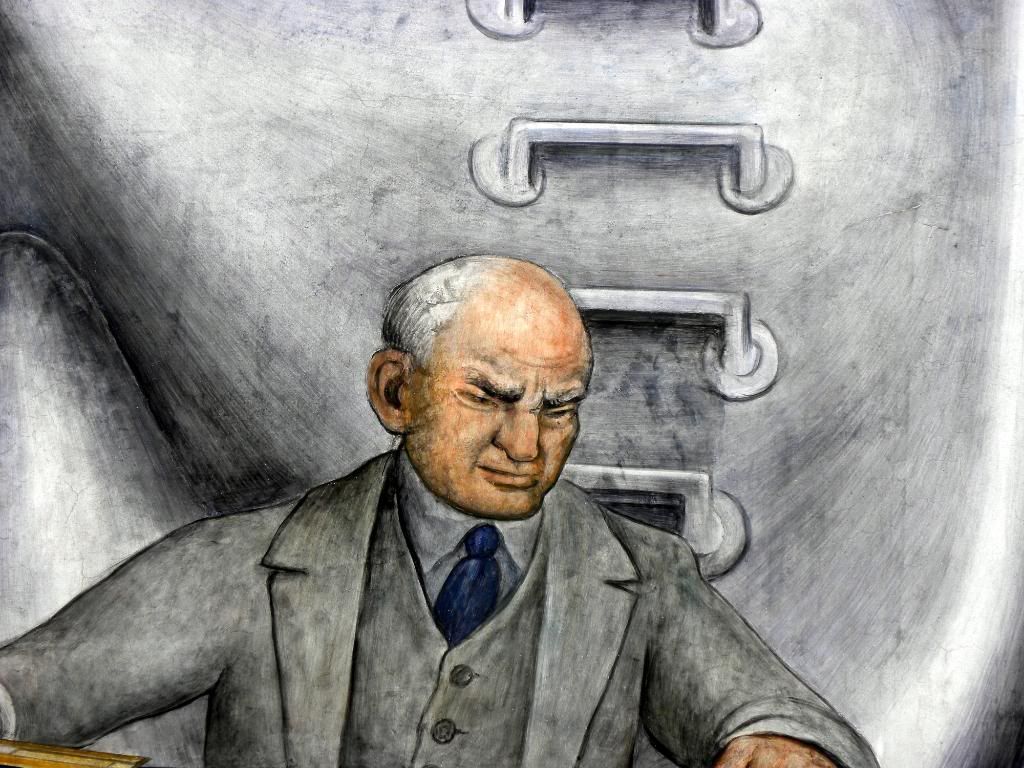
The artist - Diego Rivera - depicted himself as part of the cycle (he's the sad man with the top hat).
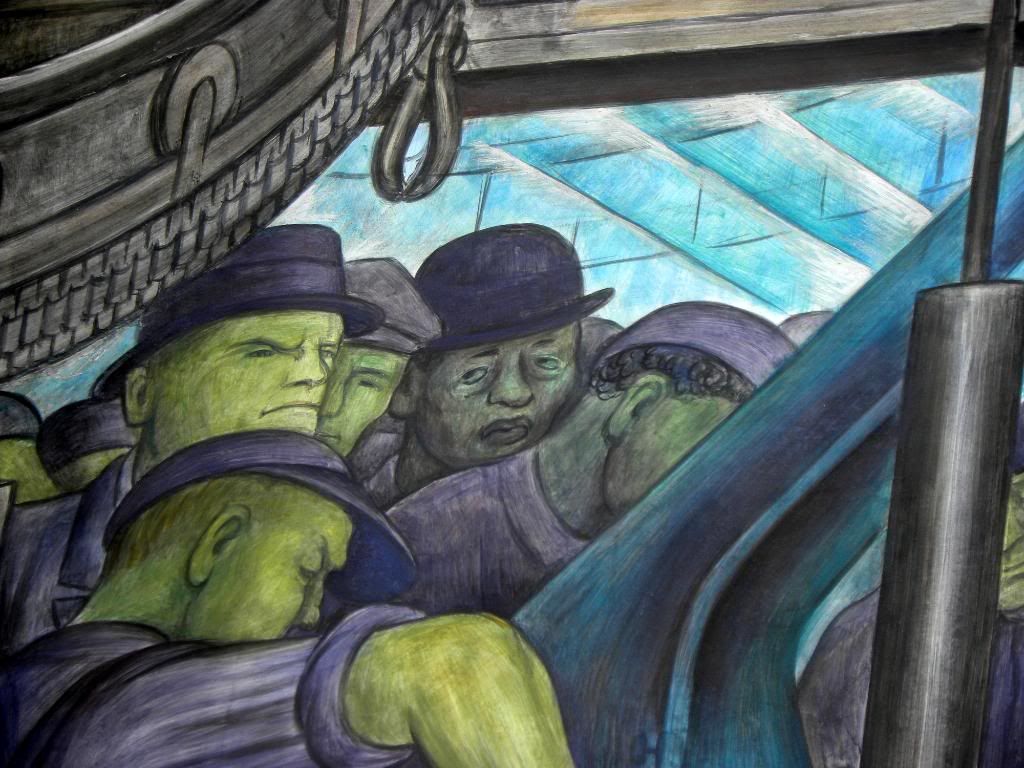
The DIA's Rivera Court (cont.)
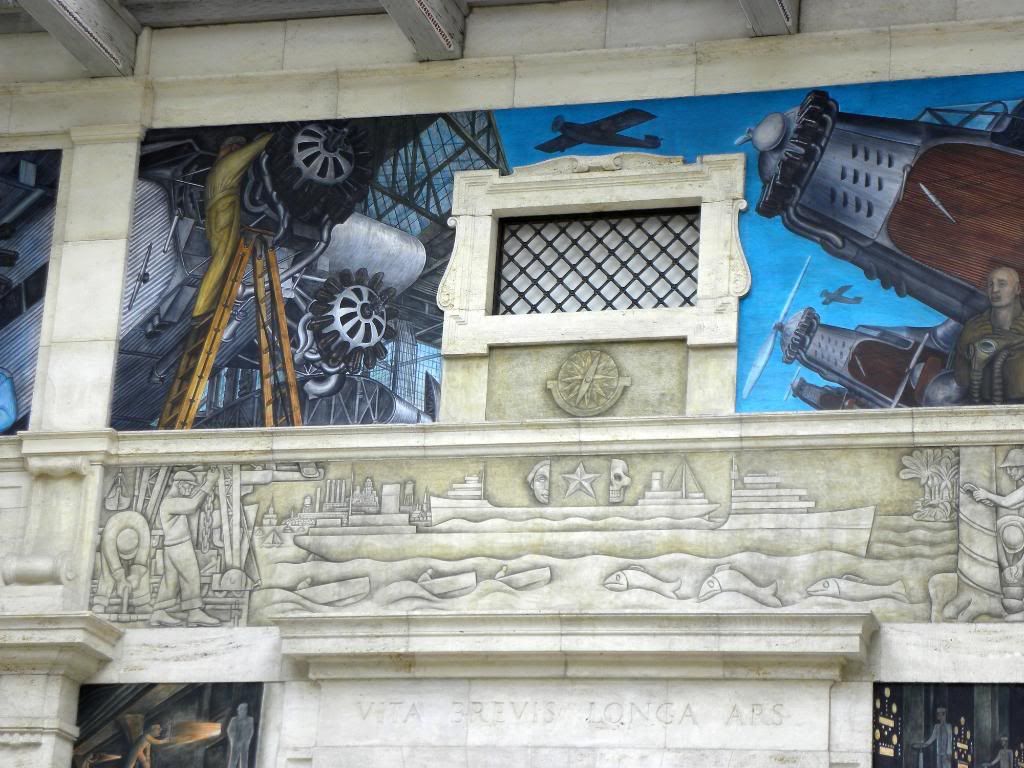
To our pleasure, but not really surprise, we found a lot more to admire in the DIA beyond Rivera's awesome frescos. For instance, we found one of Frank Lloyd Wright's original "Tree of Life" windows which was originally part of Buffalo, New York's "Darwin D. Martin Complex" (which coincidentally we visited back in March).
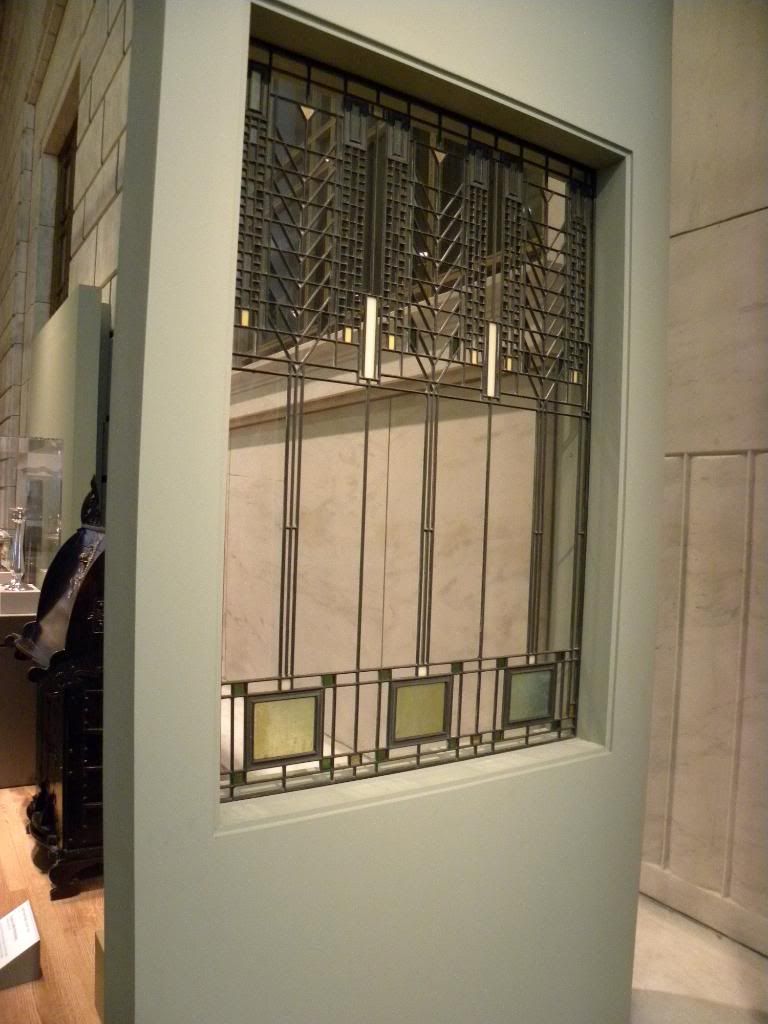
An installation in the Contemporary Gallery of the DIA.
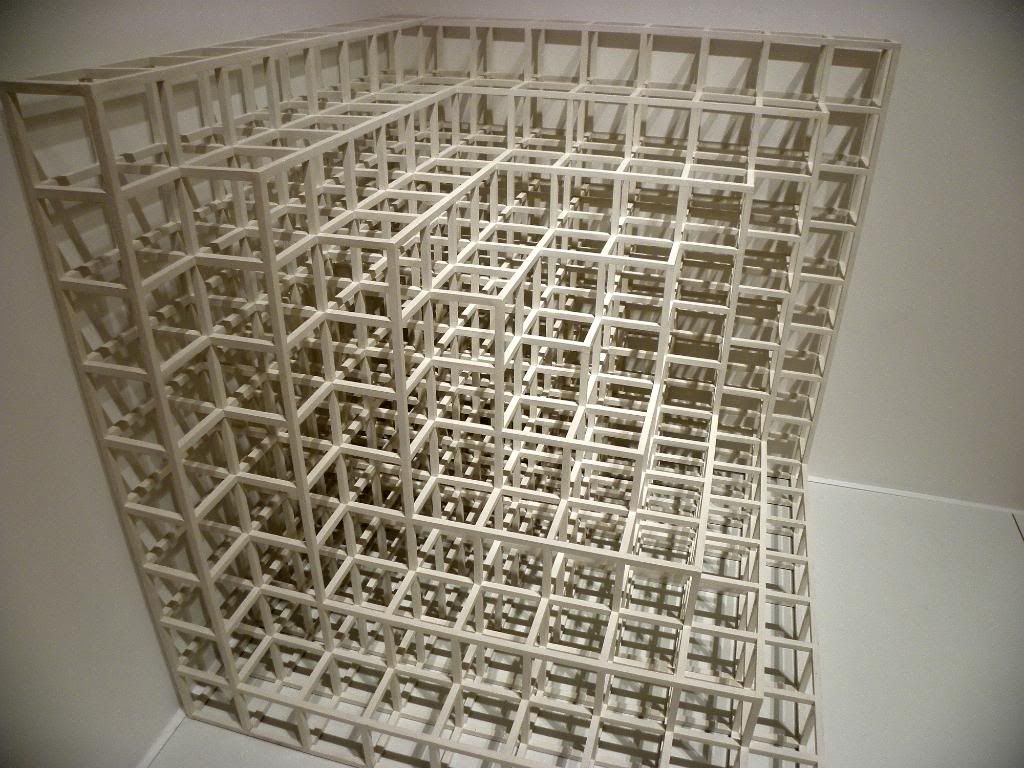
Another installation in the Contemporary Gallery of the DIA.
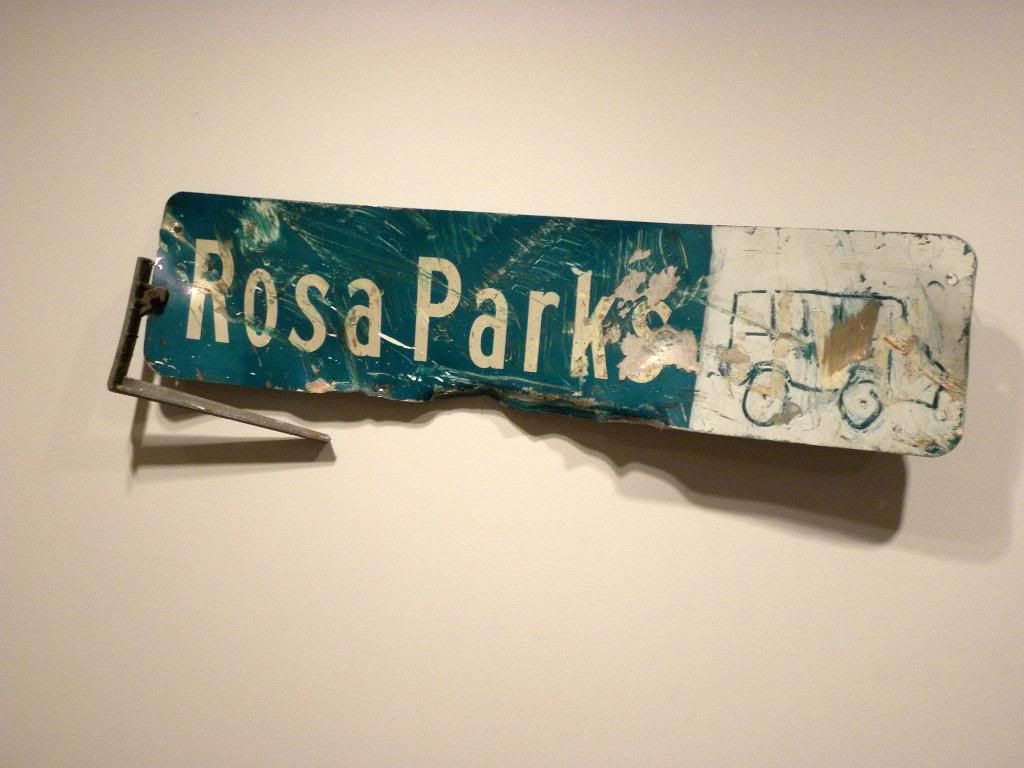
Andy Warhol's self portrait in the DIA's Contemporary Gallery.
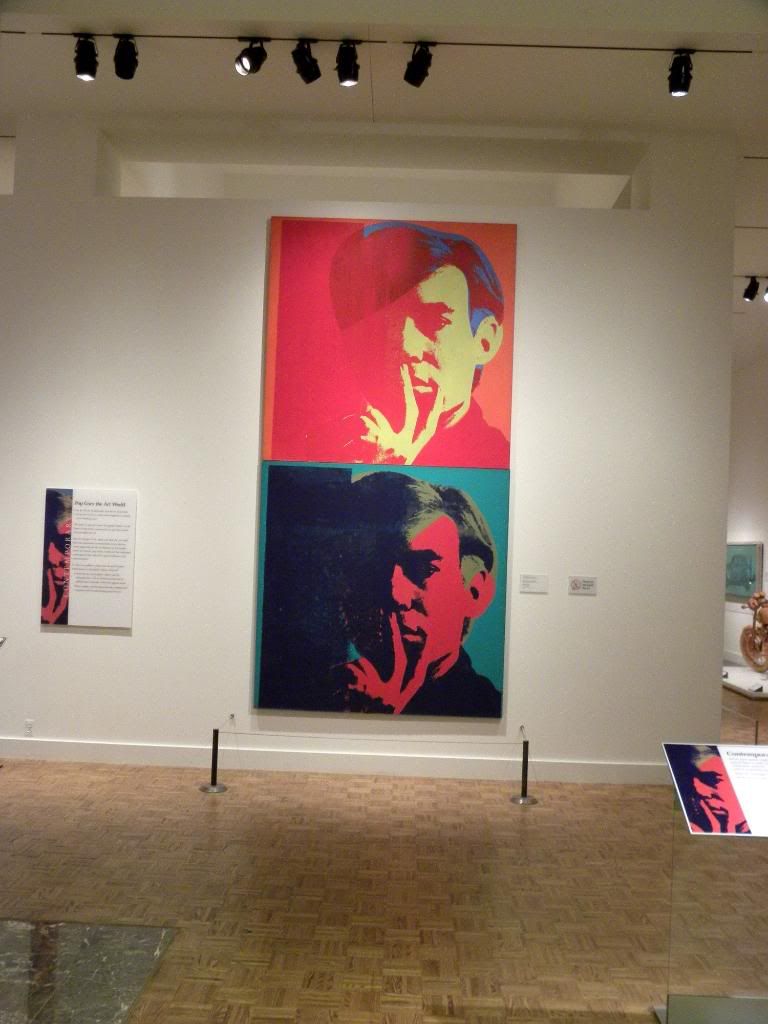
One of the more humouros pieces we found in the Contemporary Gallery of the DIA.

A final installation from the Contemporary Gallery of the DIA.
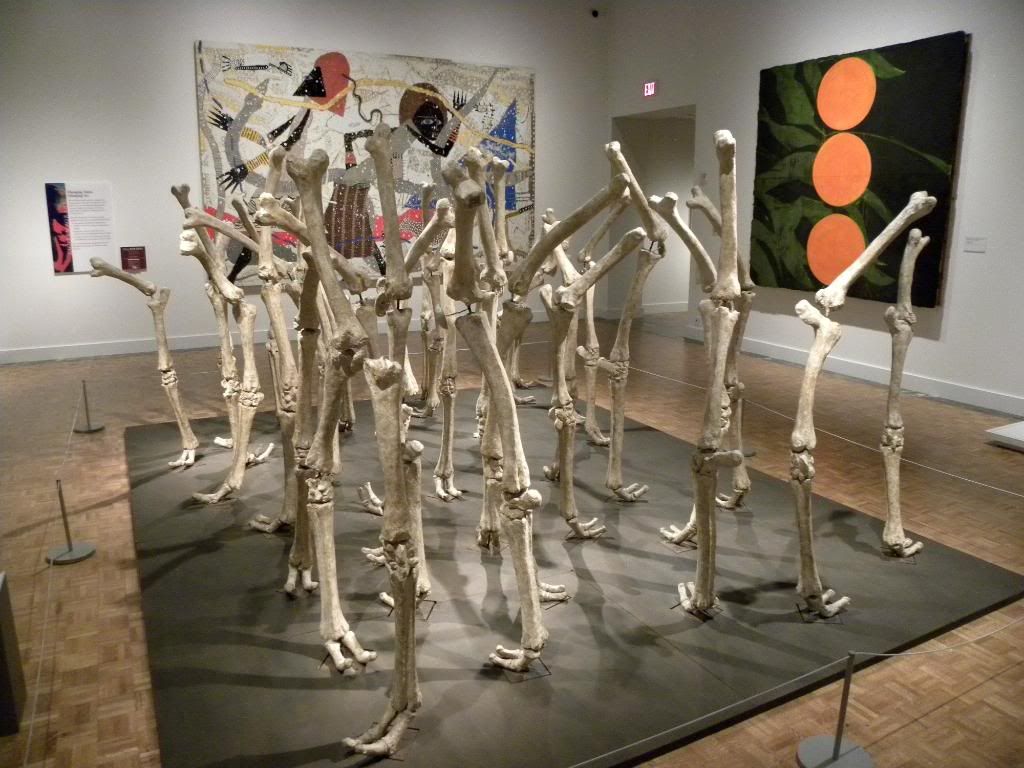
Then it was off to find the infamous Michigan Central Terminal, but snapping a few pics along the way. This would have been from one of Detroit's many "urban prairies" just a bit north-west of the downtown.

We also passed what remains of Detroit's Tiger Stadium (closed in 1999). It was declared a State of Michigan Historic Site in 1975 and listed on the National Register of Historic Places since 1989. Despite this, the city of Detroit ripped most of it down in 2008 and sold it for scrap. Efforts continue to try and save the remaining portion of the structure.
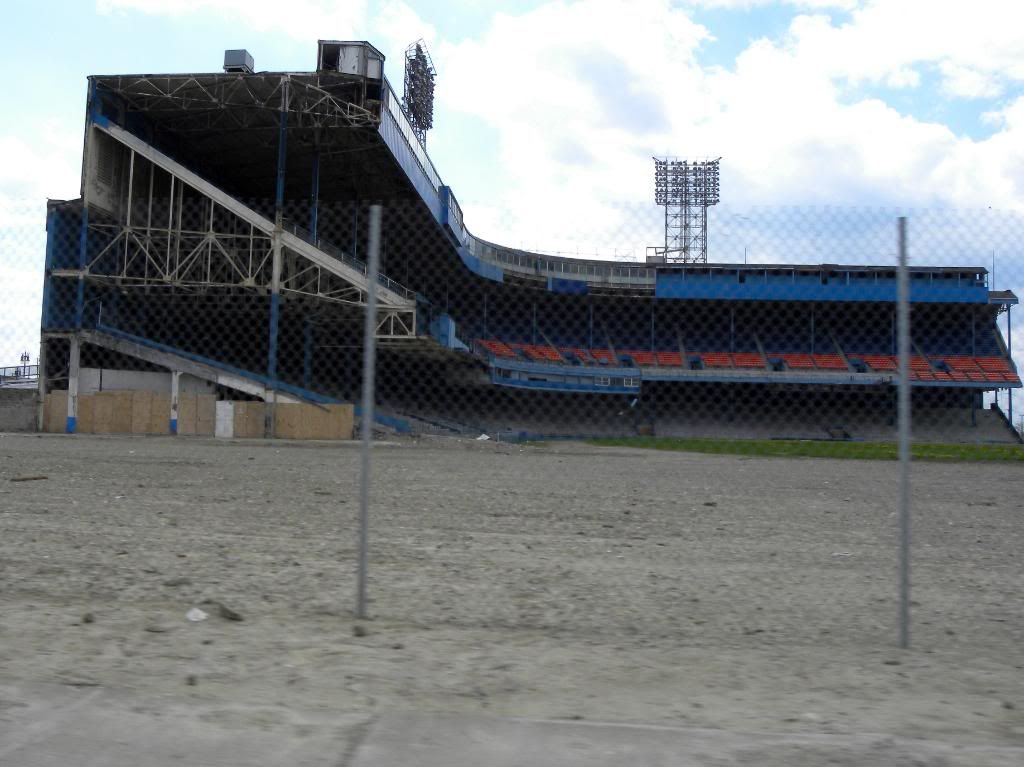
Michigan Central Station was built in 1913 and was Detroit, Michigan's passenger rail depot from its opening in 1913, until the cessation of Amtrak service in 1988. At the time of its construction, it was the tallest rail station in the world.

Michigan Central is one of the most popular urban exploration sites in the world and relatively easy to break-in to. We decided not to...this time.
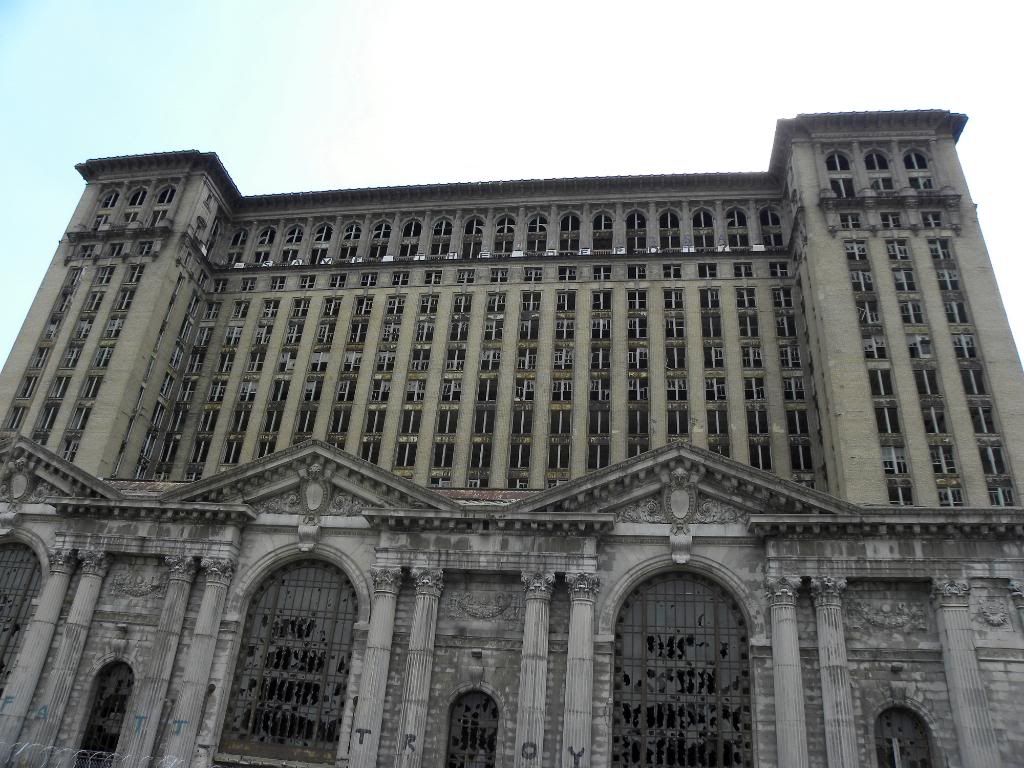
Sadly, just a few weeks ago Detroit City Council voted to demolish the station in an "expedited fashion." It could be down within months.

Michigan Central Terminal (cont.)...
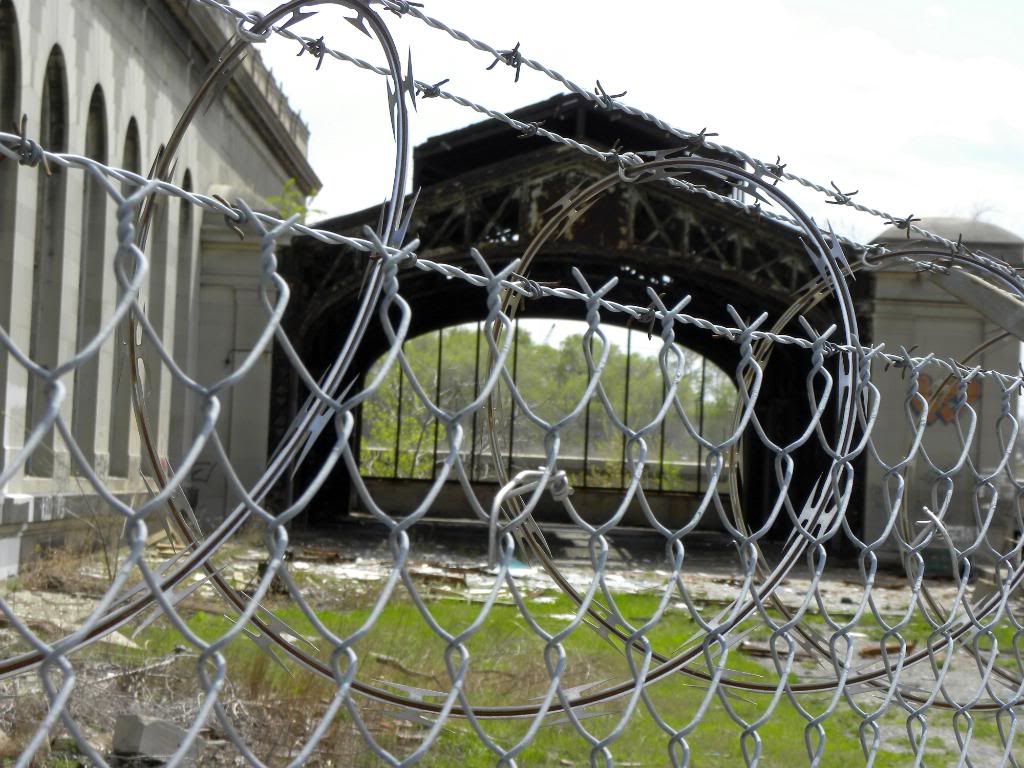
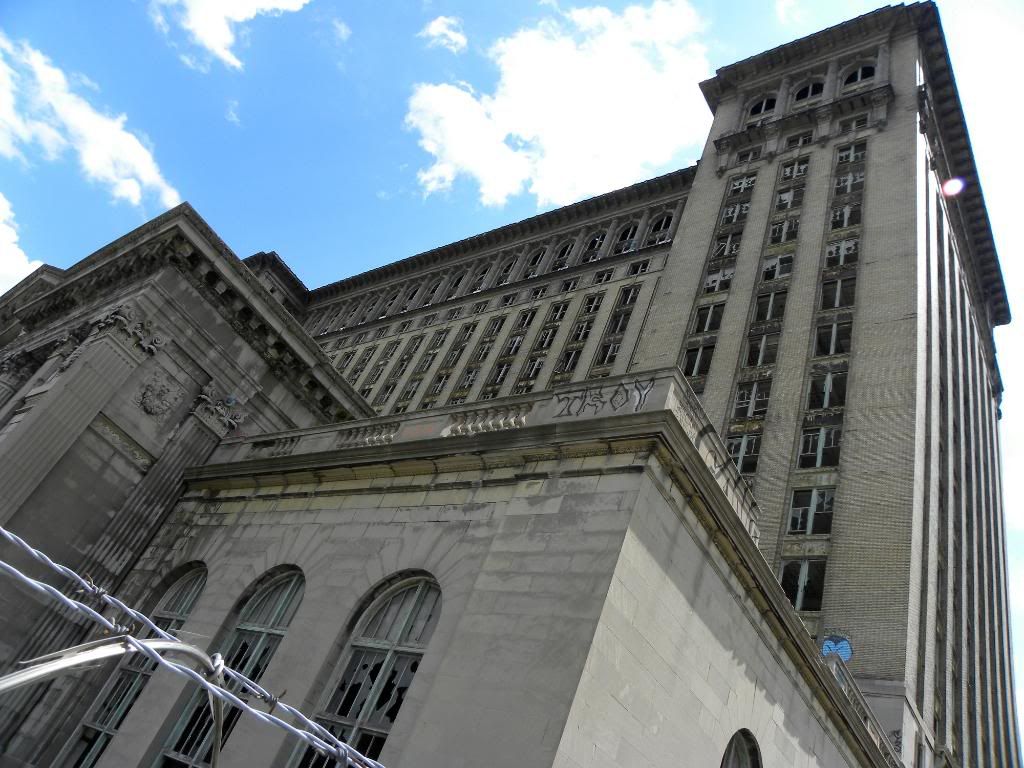
A juxtaposition of enormous proportions...
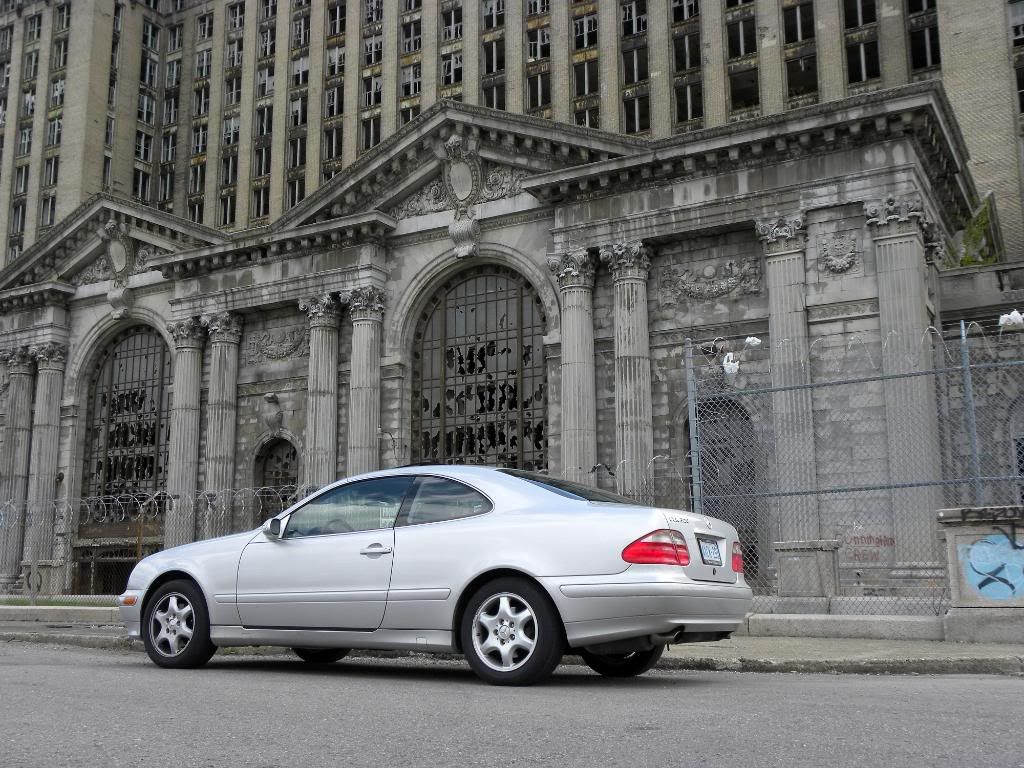
Michigan Central (much like Buffalo's "Buffalo Central") was built a few kilometres outside of the downtown in anticipation of the downtown moving towards it. In both cases, it never materialized. Today, Detroit's Corktown neighbourhood is considered the city's oldest surviving neighbourhood even though various "urban renewal" projects have left it only a fraction of its former size.
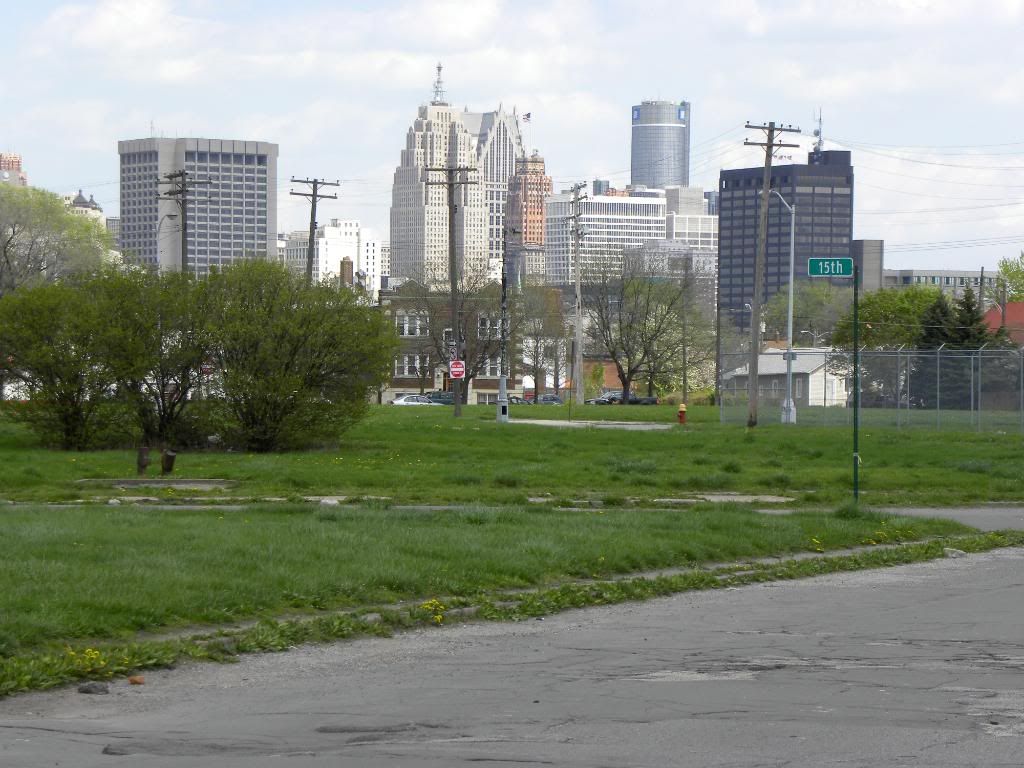
Then it was time to check-in to our hotel. The infamous Book Cadillac.
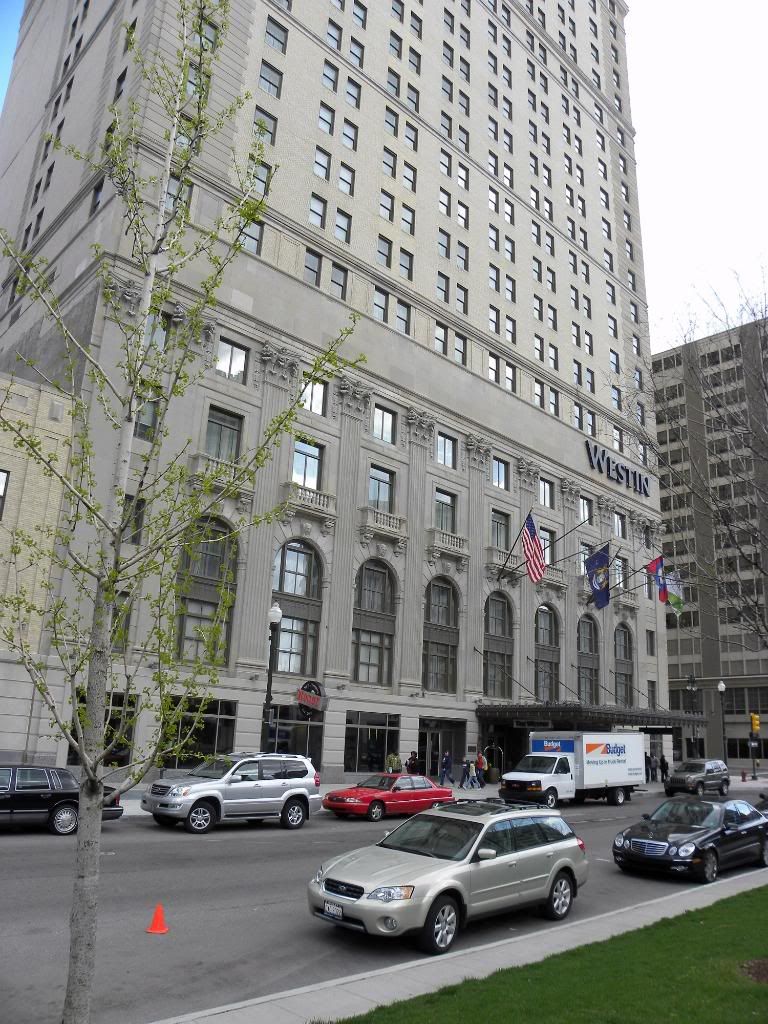
The hotel opened in 1924 and at the time was the tallest hotel in the world. Sadly, it sat abandoned between 1984 and 2006. The Westin chain now operates a hotel on the property, but only after a complete gutting and refurbishment of the property. It is one of only a very few "good news stories" to come out of Detroit over the last few years.
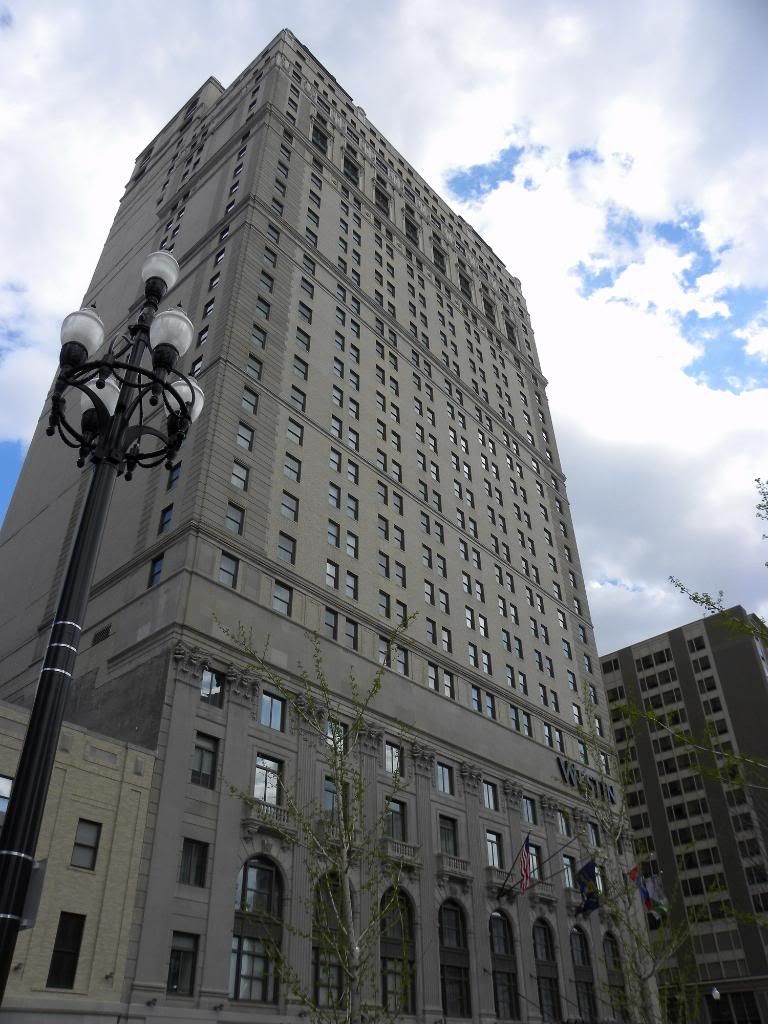
The Westin Book Cadillac Detroit (as it is now called) from Michigan Avenue.
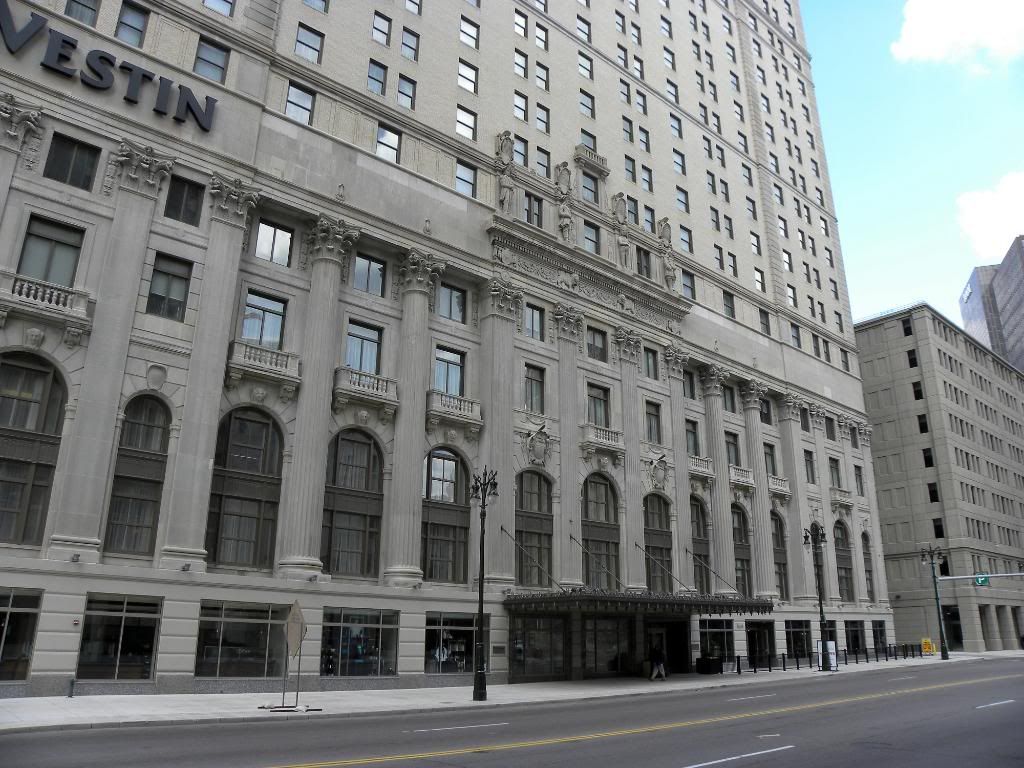
Across the street from the Book-Cadillac sits the ominous Book Tower. This tower is arguably the most unique on Detroit's skyline. Built in the Italian Renaissance style it was started in 1916, as an addition to the original Book Building, and finished a decade later.
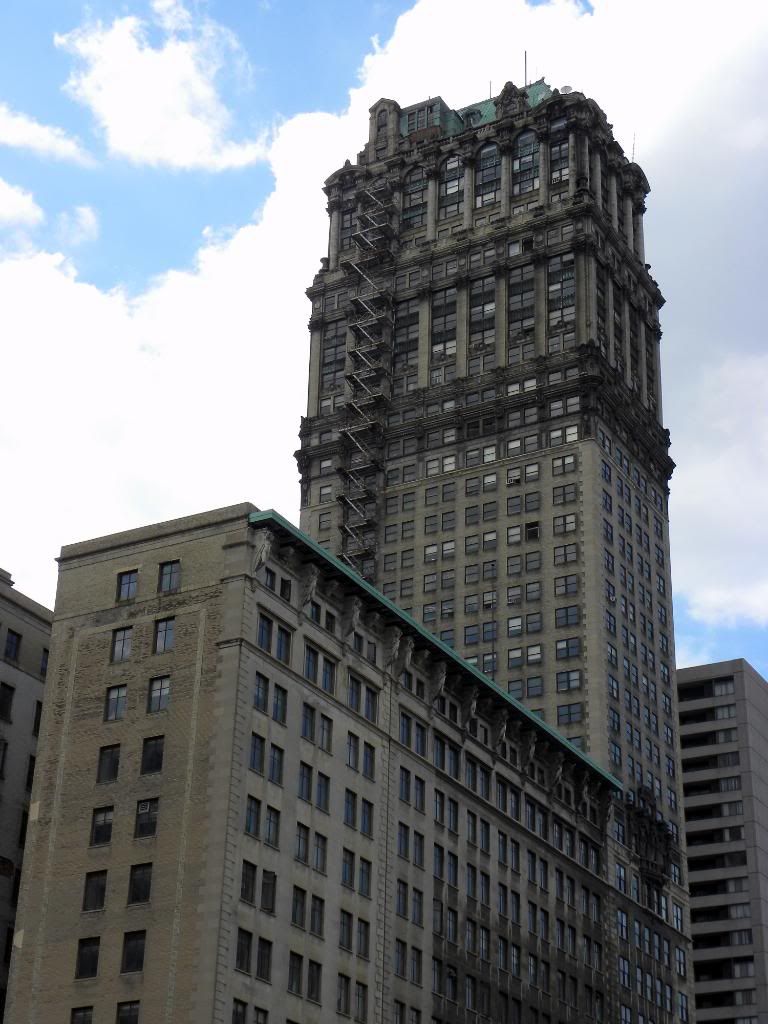
On January 5, 2009, the last occupant of the tower, Bookies Tavern, closed its doors to move to a new location, still downtown. The Book Building and Book Tower are now completely vacant.
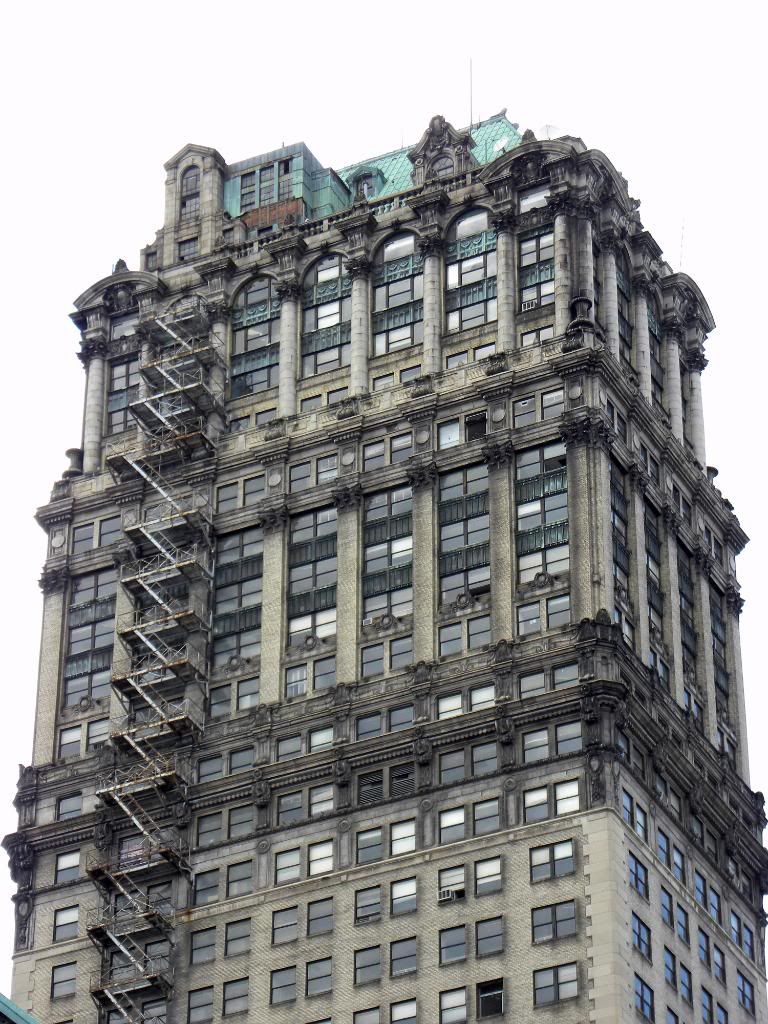
The new Rosa Parks Transit Center is behind schedule, but should be opening sometime this year. The 24-hour multi-modal centre will feature 12 bus bays covered by a tensile structure.

Then it was time for a ride on the world's largest toy train set...The Detroit People Mover. The art is Kirk Newman's "On the Move" inside the Michigan Avenue Station.
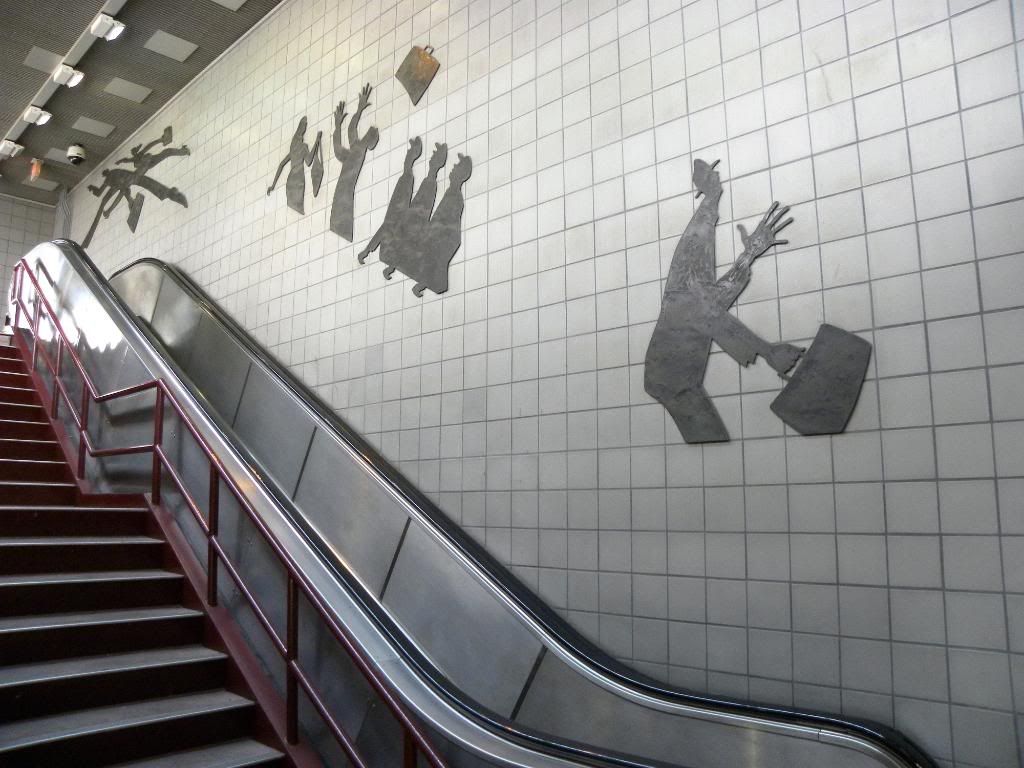
Continued @ Detroit II.
Detroit begins to rise out of farmer's fields about 10 minutes before arriving in Windsor.

Entering North America's "car capitals" in a Benz.

Detroit's skyline towers over Windsor's Ouellette Avenue as if no river or international border exists.

Detroit's skyline from Windsor's Riverside Drive

A final shot of Detroit from the Canadian side of the Detroit River.

Upon entering Detroit we headed straight up Woodward to the "Arts Center" neighbourhood and to the Detroit Institute of the Arts.

The Detroit Institute of Arts (DIA) showcases an immense range of art, much of it acquired during the period when Detroit was a much larger, powerful and more significant city. The DIA actually ranks as the second largest municipally-owned museum in the United States with an art collection valued at more than $1 billion dollars.

Our primary purpose in visiting the DIA was to see Diego Rivera's (Mexican, 1886–1957) fresco cycle in Rivera Court.

The central panel of the north wall depicts the production of the 1932 Ford V8.

The major panel of the south wall is devoted to the production of the automobile’s exterior.

The north and south walls are both devoted to three sets of images: the representation of the races that shape North American culture, the automobile industry and the other industries of Detroit. At the bottom of the walls are small panels which depict the sequence of a day in the life of the workers at the Ford River Rouge plant.

The frescos were commissioned by Edsel Ford, president of the Arts Commission as well as of Ford Motor Company and Dr. William Valentiner, director of the DIA.

Rivera Court is considered one of the finest examples of Mexican muralist work in the United States and Rivera considered it the most successful work of his career.

The DIA's Rivera Court (cont.)...


Henry Ford himself is depicted in one of the murals (in the DIA's Rivera Court).

The artist - Diego Rivera - depicted himself as part of the cycle (he's the sad man with the top hat).

The DIA's Rivera Court (cont.)

To our pleasure, but not really surprise, we found a lot more to admire in the DIA beyond Rivera's awesome frescos. For instance, we found one of Frank Lloyd Wright's original "Tree of Life" windows which was originally part of Buffalo, New York's "Darwin D. Martin Complex" (which coincidentally we visited back in March).

An installation in the Contemporary Gallery of the DIA.

Another installation in the Contemporary Gallery of the DIA.

Andy Warhol's self portrait in the DIA's Contemporary Gallery.

One of the more humouros pieces we found in the Contemporary Gallery of the DIA.

A final installation from the Contemporary Gallery of the DIA.

Then it was off to find the infamous Michigan Central Terminal, but snapping a few pics along the way. This would have been from one of Detroit's many "urban prairies" just a bit north-west of the downtown.

We also passed what remains of Detroit's Tiger Stadium (closed in 1999). It was declared a State of Michigan Historic Site in 1975 and listed on the National Register of Historic Places since 1989. Despite this, the city of Detroit ripped most of it down in 2008 and sold it for scrap. Efforts continue to try and save the remaining portion of the structure.

Michigan Central Station was built in 1913 and was Detroit, Michigan's passenger rail depot from its opening in 1913, until the cessation of Amtrak service in 1988. At the time of its construction, it was the tallest rail station in the world.

Michigan Central is one of the most popular urban exploration sites in the world and relatively easy to break-in to. We decided not to...this time.

Sadly, just a few weeks ago Detroit City Council voted to demolish the station in an "expedited fashion." It could be down within months.

Michigan Central Terminal (cont.)...


A juxtaposition of enormous proportions...

Michigan Central (much like Buffalo's "Buffalo Central") was built a few kilometres outside of the downtown in anticipation of the downtown moving towards it. In both cases, it never materialized. Today, Detroit's Corktown neighbourhood is considered the city's oldest surviving neighbourhood even though various "urban renewal" projects have left it only a fraction of its former size.

Then it was time to check-in to our hotel. The infamous Book Cadillac.

The hotel opened in 1924 and at the time was the tallest hotel in the world. Sadly, it sat abandoned between 1984 and 2006. The Westin chain now operates a hotel on the property, but only after a complete gutting and refurbishment of the property. It is one of only a very few "good news stories" to come out of Detroit over the last few years.

The Westin Book Cadillac Detroit (as it is now called) from Michigan Avenue.

Across the street from the Book-Cadillac sits the ominous Book Tower. This tower is arguably the most unique on Detroit's skyline. Built in the Italian Renaissance style it was started in 1916, as an addition to the original Book Building, and finished a decade later.

On January 5, 2009, the last occupant of the tower, Bookies Tavern, closed its doors to move to a new location, still downtown. The Book Building and Book Tower are now completely vacant.

The new Rosa Parks Transit Center is behind schedule, but should be opening sometime this year. The 24-hour multi-modal centre will feature 12 bus bays covered by a tensile structure.

Then it was time for a ride on the world's largest toy train set...The Detroit People Mover. The art is Kirk Newman's "On the Move" inside the Michigan Avenue Station.

Continued @ Detroit II.
Last edited:
